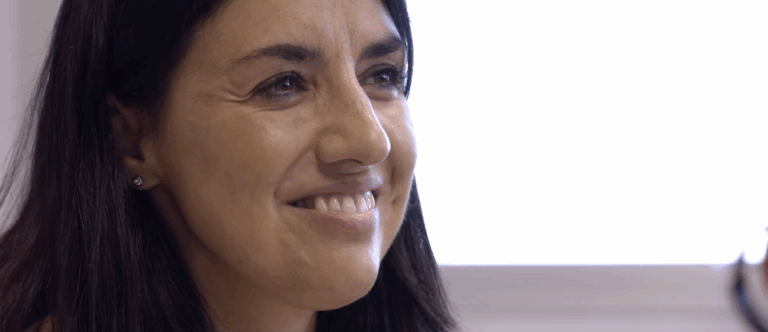Con motivo de la pandemia del Covid 19 y la subsecuente crisis, desde Europa se acordó desarrollar una herramienta para paliar los daños económicos y sociales causados, la cual ya es comúnmente conocida como los Fondos Next Generation UE. Dentro de esta herramienta se definieron diferentes elementos de recuperación y financiación, entre los cuales destaca el Mecanismo de Recuperación y Resiliencia (MRR). Este elemento recoge cerca del 90% de la financiación de los 806.900 M€ de los que se ha dotado la herramienta.
El MRR ha incluido un principio horizontal novedoso en comparación a otros fondos: “El Principio de no causar daño o perjuicio significativo (Do not significant harm -DNSH)”. Este principio, heredado del reglamento 2020/852 sobre la taxonomía europea para las inversiones sostenibles (en adelante, reglamento de la Taxonomía, o la Taxonomía), introduce la obligación de evaluar todos las inversiones y reformas recogidas en los Planes de Recuperación con respecto a no causar daño significativo en uno o varios de los 6 objetivos ambientales de la taxonomía. Esta obligación se traslada, a través de los diferentes instrumentos de la administración (p.e: licitaciones, ayudas o subvenciones), a los beneficiarios de los fondos.
¿Cómo se evaluará el correcto cumplimiento del principio?
La Comisión Europea evaluó la aplicación de este principio en cada uno de los planes de los Estados Miembros, siendo un criterio excluyente y motivado, por el cual se podía rechazar el Plan del Estado Miembro. También definirá controles a futuro del cumplimiento de dichas aplicaciones.
En esta línea, el Plan de Recuperación Transformación y Resiliencia (PRTR) de España ha definido una serie de herramientas o directrices para cumplir con el principio que se están desarrollando a través de Guías y/o son establecidos en los Planes Estratégicos para la Recuperación y Transformación Económica (PERTEs). La administración ha definido dos posibles líneas de trabajo, si bien pueden no ser las únicas:
- Evaluación del principio por parte de las Administraciones Públicas de las solicitudes recibidas: en este caso podrán estar llevadas por la propia administración o por organismos contratados para tal fin.
- Obligación de disponer de un certificado de evaluación del principio DNSH por parte de un tercero independiente acreditado. En esta línea ENAC, a instancias de la Dirección General de Industria, ha desarrollado un programa de acreditación específico para la verificación y validación del cumplimiento del Principio DNSH de proyectos enmarcados dentro del PRTR.
En el caso de las beneficiarias o solicitantes de las ayudas o los fondos deberán elaborar una evaluación del Principio de DNSH para el proyecto siguiendo las siguientes fases:
- Identificación de la elegibilidad de la actividad: Como primer paso, deberá analizarse si la medida es elegible. En caso de no ser elegible no podrá optar al fondo. Por ejemplo, la construcción de una refinería de crudo es una actividad no elegible, por lo que no podrá optar ni siquiera a la evaluación del principio, automáticamente queda descartado.
- Si es elegible, deberá analizar si la actividad no es de bajo impacto ambiental o es de bajo impacto ambiental. Las actividades que no son de bajo impacto ambiental podrán ser elegibles únicamente si:
- No hay alternativas viables de bajo impacto.
- Son las mejores dentro del sector.
- Conducen a una mejora medioambiental significativa.
- Evitan situaciones de bloque perjudiciales para el medio ambiente.
- No obstaculiza el desarrollo e implantación de otras alternativas de menor impacto.
Si alguno de estos aspectos no es conforme esta actividad será considerada como no elegible.
- Evaluación para cada uno de los objetivos el cumplimiento del principio DNSH: una vez se confirma que es elegible, es de bajo impacto o se ha justificado que la actividad no de bajo impacto es elegible. Esta evaluación deberá realizarse por todos los solicitantes, con independencia de que su actividad sea de bajo impacto ambiental.
Aquellos proyectos que no puedan justificarse bajo estas tres casuísticas deberán someterse a una evaluación más profunda y deberá realizarse una justificación sustantiva, detallando las causas por las que no causa un daño o perjuicio significativo. Es en este punto donde existe una mayor complejidad, ya que, aunque existen distintas herramientas que pueden ayudar a justificar el principio, pueden no ser suficientes o deberán ir acompañadas de elementos adicionales que doten a la justificación de consistencia y fiabilidad.
Adicionalmente, existen una serie de actividades sobre los cuales se han desarrollado una serie de indicaciones específicas que deberán considerarse, como mínimo, en la evaluación del principio (uso de biomasa y/o biocombustibles, infraestructuras de riego, uso de agua desalada, restauraciones forestales, entre otras).
En conclusión, la Unión Europea ha fortalecido o está fortaleciendo los requisitos en materia ambiental asociado a la recepción de fondos y ayudas, como se puede demostrar con la incorporación del principio DNSH en estos mecanismos de financiación, en línea con la estrategia europea en materia de finanzas sostenibles.
Este análisis, que deberá realizarse por parte de las organizaciones beneficiarias de la ayuda, podrá ser evaluada por un tercero independiente. Es importante resaltar que el incumplimiento de este principio durante la realización del proyecto puede suponer una retirada y devolución del fondo, por lo cual es necesario realizar un análisis consistente y detallado que minimice el riesgo.
Es por ello que la organización deberá trabajar en una justificación soportada por estudios, evaluaciones e informes que aporten una visión objetiva y consistente. Asimismo, la evaluación por un tercero independiente aportará un nivel de seguridad adicional que asegurará el cumplimiento del principio y minimizará el riesgo de incumplimiento, junto con la consecuente desestimación de la ayuda.
















